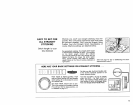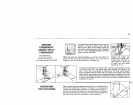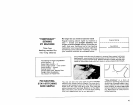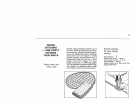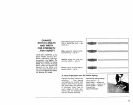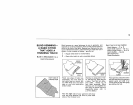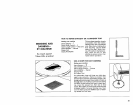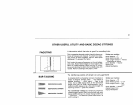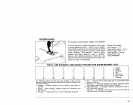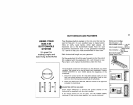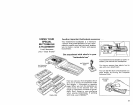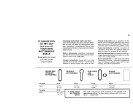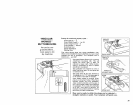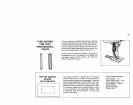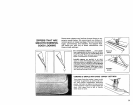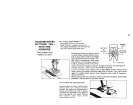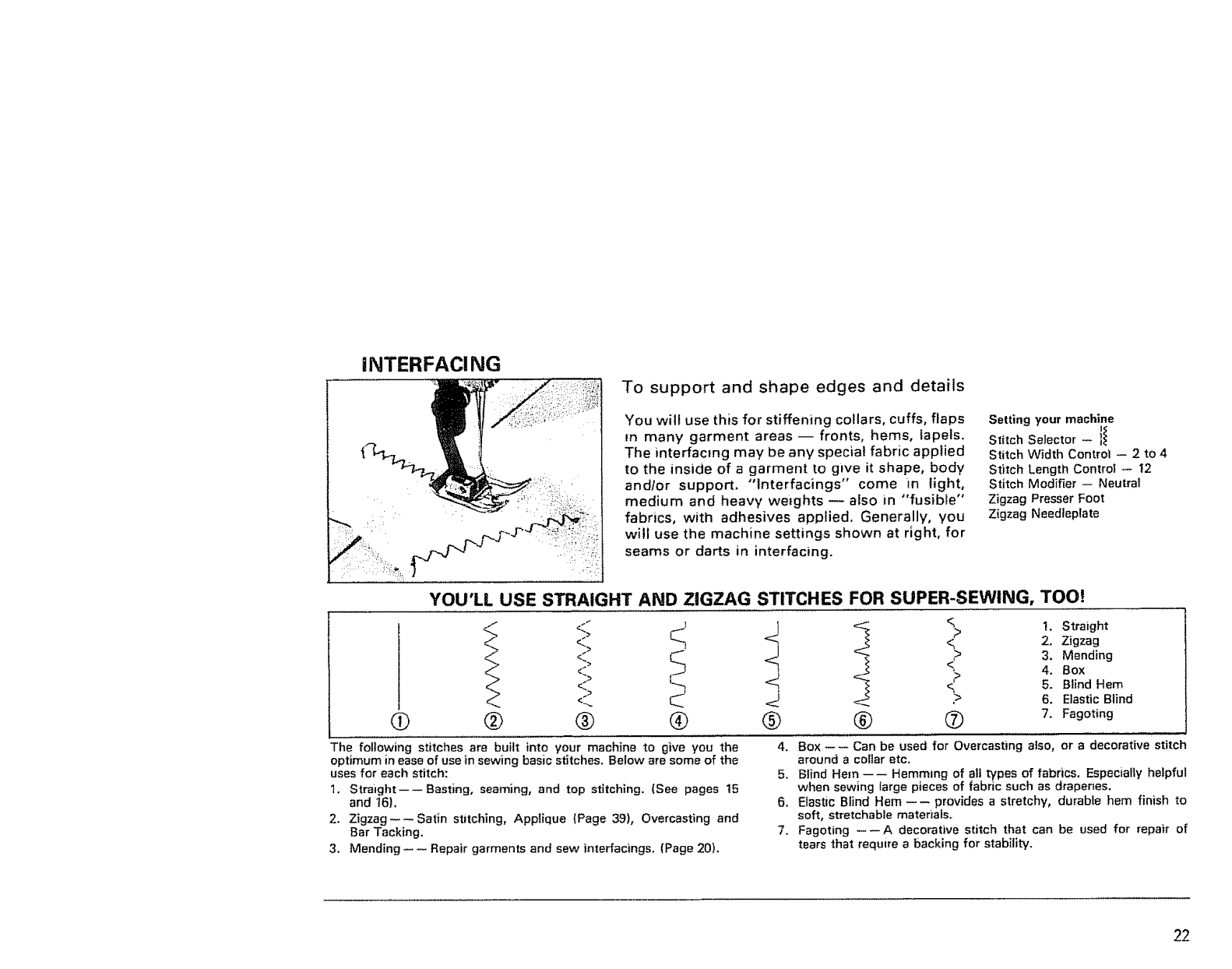
iNTERFACING
I
To support and shape edges and details
You will use this for stiffening collars, cuffs, flaps
m many garment areas -- fronts, hems, iapels.
The interfacing may be any special fabric applied
to the inside of a garment to give it shape, body
and/or support. "'tnterfacings" come m light,
medium and heavy weaghts w also in "fusible"
fabrics, with adhesives applied, Generally, you
will use the machine settings shown at right, for
seams or darts in interfacing.
Setting your machine
|_
Stitch Selector -- il
Stitch Width Controt-- 2 to 4
Stitch Length Control -- 12
Stitch Modifier -- Neutral
Zigzag Presser Foot
Zigzag Needleplate
YOU'LL USE STRAIGHT AND ZIGZAG STITCHES FOR SUPER-SEWING, TOO!
%> <'
® ® ® ® ® ®
1. Straight
2, Zigzag
3. Mending
4. Box
5. Blind Hem
6. Elastic Blind
7. Fagoting
The following stitches are built into your machine to give you the
optimum in ease of use in sewing basic stitches. Below are some of the
uses for each stitch:
t. Straight----Basting, seaming, and top stitching. (See pages 15
and 16).
2. Zigzag----Satin stitching, AppIiclue (Page 39), Overcasting and
Bar Tacking.
3. Mending---- Repair garments end sew interfacings, (Page 20).
4. Box ---- Can be used for Overcasting also, or a decorative stitch
around a collar etc.
5. Blind Hem ---- Hemming of all types of fabrics, Especially helpful
when sewing large pieces of fabric such as draperies.
6, Elastic Blind Hem ---- provides a stretchy, durable hem finish to
soft, stretchable materials.
7. Fagoting ----A decorative stitch that can be used for repair of
tears that requae a backing for stability.
22



